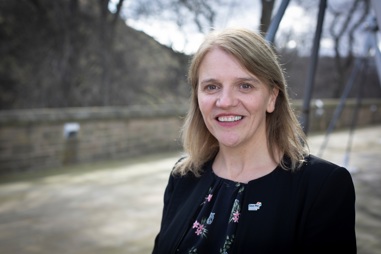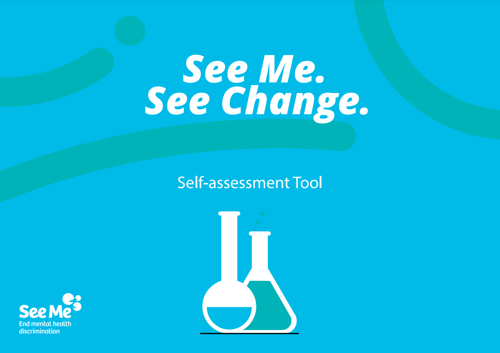
Getting involved in See Me See Change
Below, we've compiled some information for school senior leadership teams on the benefits of the See Me See Change approach.
A message from See Me director Wendy Halliday
 Schools play such an important role for our young people, not just in providing academic education, but in supporting social and emotional wellbeing too.
Schools play such an important role for our young people, not just in providing academic education, but in supporting social and emotional wellbeing too.
There’s lots of fantastic practice across Scotland when it comes to mental health in education, with schools across the country embracing the whole school approach to mental health and wellbeing – but we know that there’s still work to be done.
More than half (51 percent) of young people wouldn’t tell anyone if they were finding it difficult to cope with their mental health.
That means that half of young people are struggling on their own.
The fear of being judged, dismissed and not taken seriously makes it difficult for young people to tell anyone how they feel – including their friends, their parents and carers, and teachers.
Despite more conversations happening around mental health, we know that stigma still exists – which is why I’m encouraging all schools in Scotland to adopt the See Me See Change approach.
See Me See Change brings together pupils and staff to work as equals, creating a plan for their school on how to tackle mental health stigma and discrimination.
Tackling stigma is three-pronged approach, involving education, protest or influencing, and social contact, or involvement of people with experience of mental health problems. See Me See Change brings all three into the classroom – and provides an opportunity for staff and pupils to see the real impact of stigma and discrimination, and why we need to challenge it.
If we’re changing hearts and minds in school, we’re going to have a new generation of adults with a much healthier attitude when it comes to mental health. A generation who aren’t afraid to speak up, to share their experiences, to ask for help and offer support when it’s needed.

The young people in your school who aren’t speaking up about what’s going on with their mental health deserve to have a safe environment where they can be heard – and See Me See Change can help to deliver that.
Below, you’ll find more information on the benefits of the See Me See Change approach. I hope that you and your school will be on board soon.
Wendy Halliday
Director, See Me
Information for senior leaders
See Me See Change has the potential to make a big difference for schools across the country - for staff and for pupils.
-

Tackling stigma is foundational to good mental health. When mental health stigma and discrimination are removed, people feel listened to, valued, included and respected; they have better access to and experience of services and sources of support; and they are more likely to achieve the outcomes that are important to them.
-

In See Me’s experience, young people who are experiencing a mental health problem often would like to talk to someone they trust and a staff member at your school very well could be that person. But there's also a big risk that they won't talk to anyone. If you're working with young people, creating a safe environment for them to talk about their feelings or problems is really important.
-

Sometimes it’s hard for young people to understand what’s going on in their head, or to be able to explain how they are feeling. But being able to talk about how they are feeling and the mental health problems they are experiencing can be empowering and improves self-belief and confidence.
-

Designed in line with the Scottish Government Whole School Approach Framework, participating in the See Me See Change approach can support the school to achieve some of the outlined considerations in tackling mental health stigma.
-

The approach also supports co-production between staff and pupils, encouraging more pupil engagement and participation in shaping an action plan for your school to tackle mental health stigma and discrimination.
-

It provides an opportunity for all staff to engage, not just those in designated mental health and wellbeing or pastoral role. For mental health stigma to be really reduced, we need all staff and pupils to normalise the conversation around mental health both for the young people they work with and their colleagues within the workplace.
-

For pupils, completion of the See Me See Change pupil sessions and corresponding three workbooks can support students gain credits towards the SQA MHWB award (Level 4).
Self-assessment tool
Every school will be at different stages in their mental health anti-stigma journey - which is why we've created this self-assessment tool for your school to judge how it’s doing in regard to reducing stigma and discrimination, and what more could be done to improve it in the future.
The self-assessment tool has been developed in line with the Scottish Government Whole School Approach framework to support children and young people’s mental health.
We've identified six areas of the school to consider when tackling mental health stigma and discrimination, and outlined some key considerations to help your school take stock and make improvements wherever needed. You can use this self-assessment tool to gauge how far you have come already in addressing mental health, and identify what more you could do across the areas.
Click on the cover below to download the tool.
Learn more about the approach
Find out more about the background of the programme and its development.
The approach
